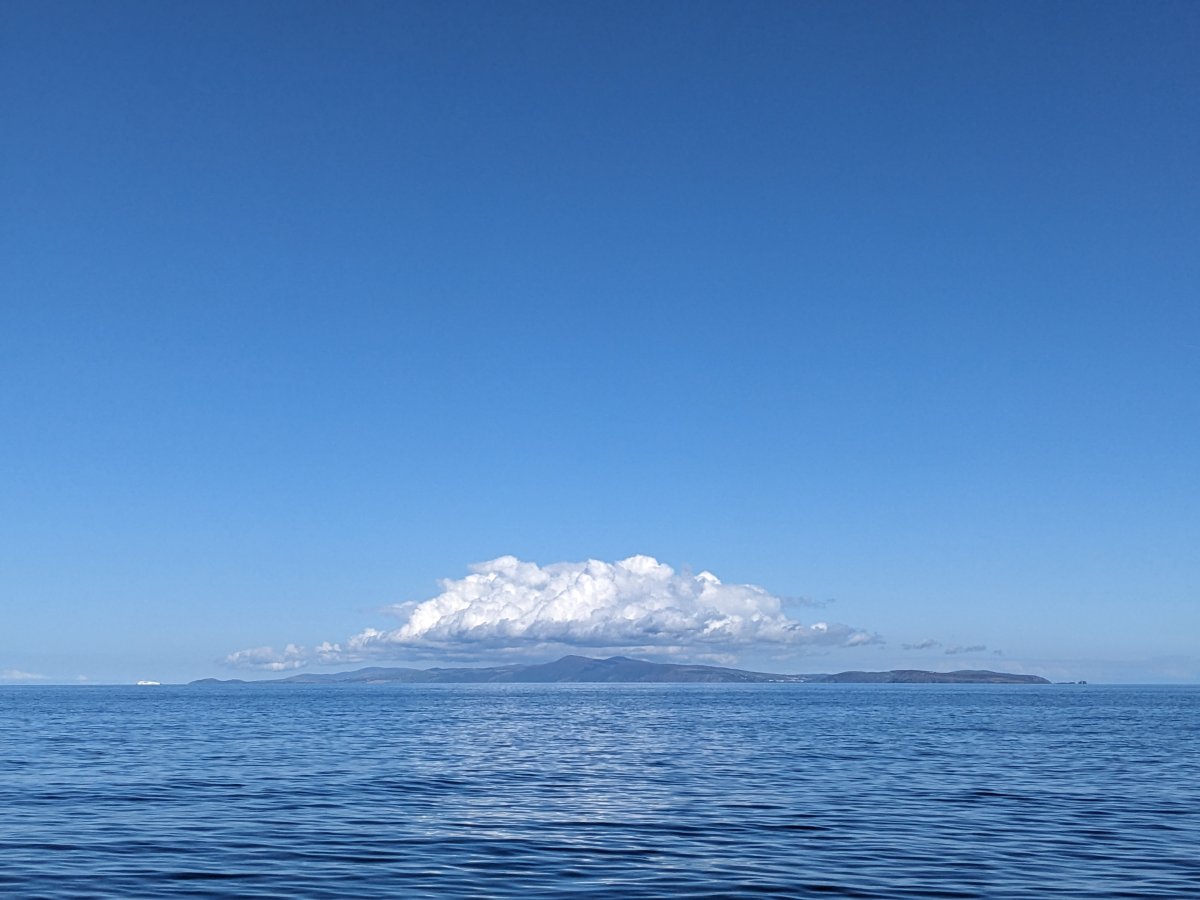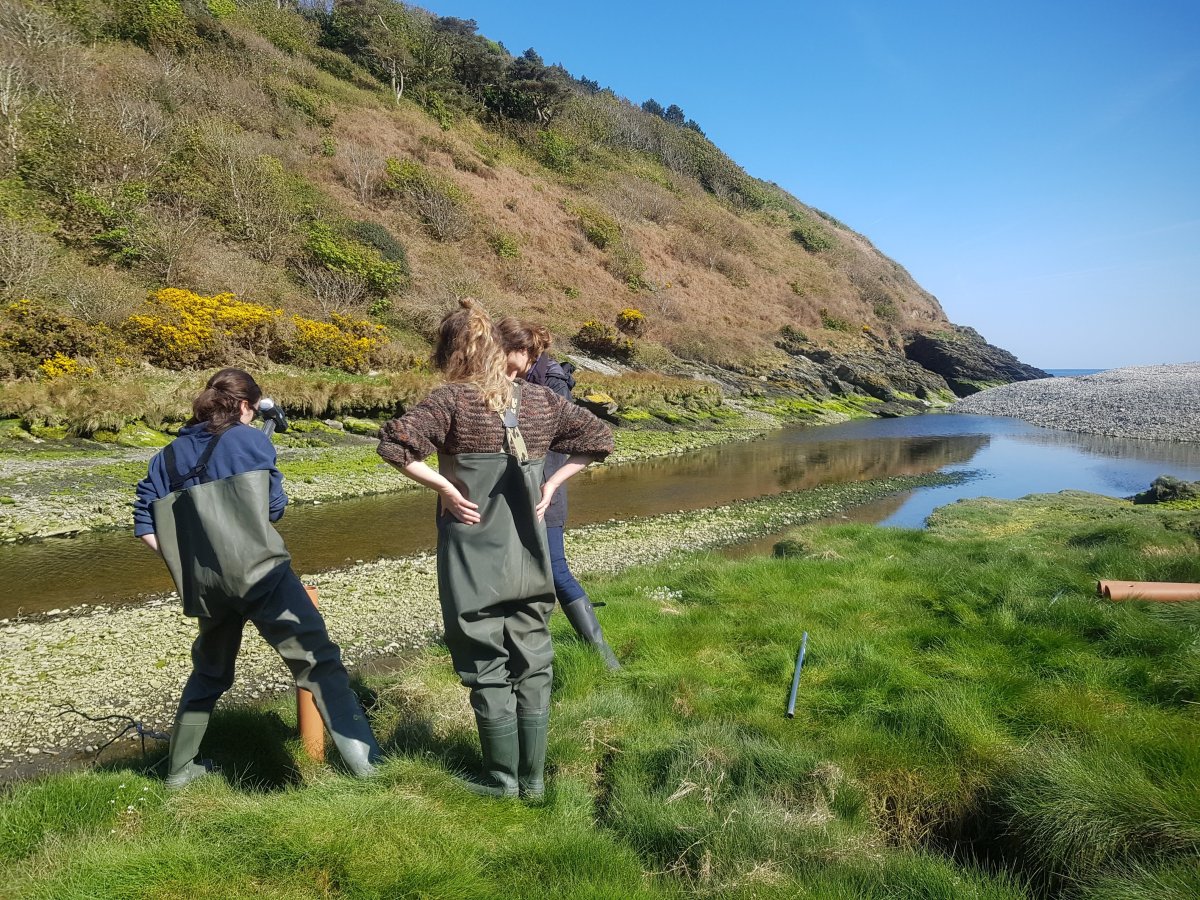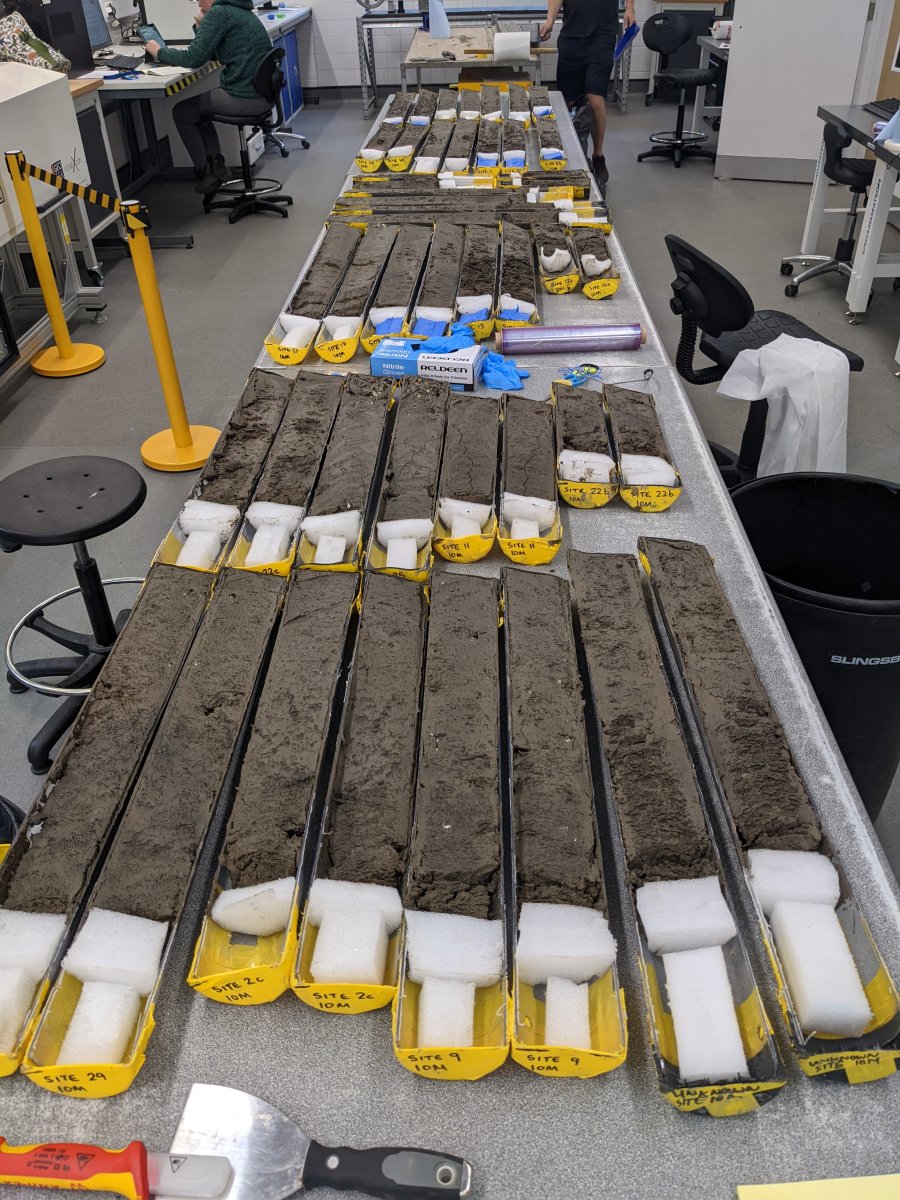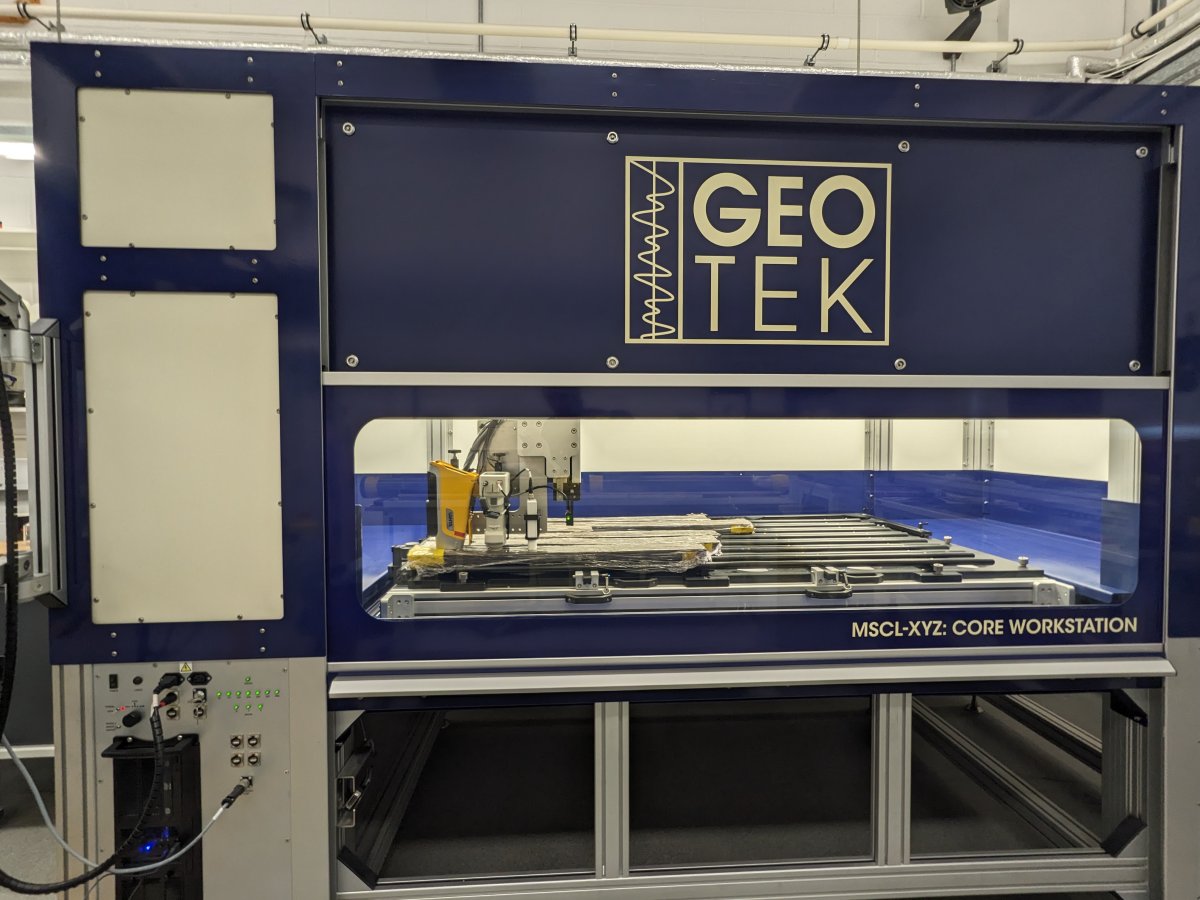Over the past year, BOSCORF has been helping PhD student, Hannah Muir, to split, image and process sediment cores from the Isle of Man.
Hannah Muir is a PhD student at Swansea University, based at the National Oceanography Centre Southampton (NOCS). Her PhD research project is part of The Manx Blue Carbon Project, which aims to quantify how much carbon is stored and accumulated within the Isle of Man’s territorial sea to inform decisions that could maximise natural carbon storage around the Island.
Blue Carbon is carbon that is stored naturally in marine ecosystems, including within the sediments of seagrass beds, saltmarshes, and offshore. The natural carbon-capture ability of marine ecosystems is important, as it helps the ocean to uptake greenhouse gases from the atmosphere and helps to regulate the global climate.

Image of Isle of Man taken during fieldwork, August, 2023 (Credit: Hannah Muir)
To understand how much carbon different sedimentary ecosystems accumulate and store, sediment cores can be collected and analysed from the different ecosystems. The Manx Blue Carbon Project team collected sediment cores from around the Isle of Man, including offshore mud, seagrass beds, saltmarshes, and other nearshore habitats. The cores (over 100!) were then shipped to BOSCORF, where they have been processed, imaged, and stored.

The Manx Blue Carbon Project team coring sediments from a saltmarsh on the Isle of Man, May, 2022 (Credit: Hannah Muir)
Using the suite of equipment available at BOSCORF, it has been possible to analyse various sediment properties and characteristics, which can inform understanding of the different physical, chemical, and biological conditions that influence carbon storage. X-ray laminographs and radiographs were captured for each core, which will be used to understand mixing properties within the sediments, for example presence of bioturbation. X-ray fluorescence (XRF) was also captured, which will be used to investigate the chemical characteristics of the sediments with depth, for example oxygen penetration depths. High resolution images were also captured, which indicate dominant grain sizes and sediment colour, which can help understanding of the environmental conditions through time. You can find out more about the Manx Blue Carbon Project on the website or in this video.

Image of sediment cores taken from offshore Isle of Man (Credit: Hannah Muir)

Sediment cores being scanned on the newly installed Geotek Ltd. XYZ at BOSCORF (Credit: Hannah Muir)
The Manx Blue Carbon Project is funded by the Department for the Environment, Food and Agriculture in the Isle of Man Government, and is a collaboration with partners at the NOCS, Swansea University, Bangor University, and University of Southampton. Follow Hannah here.
